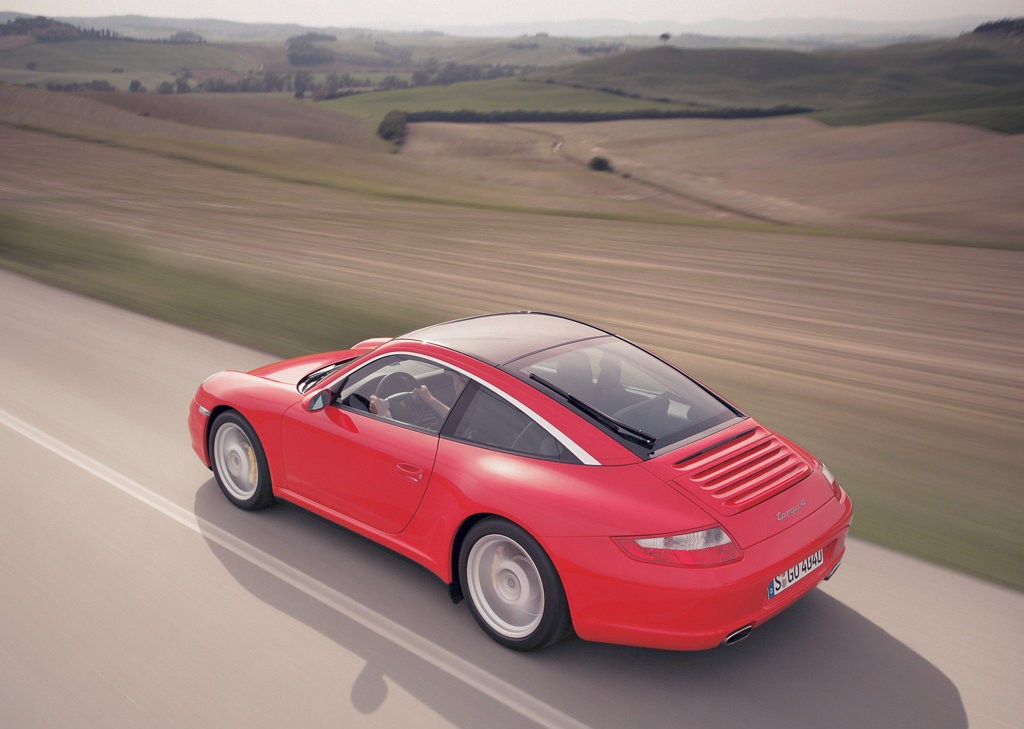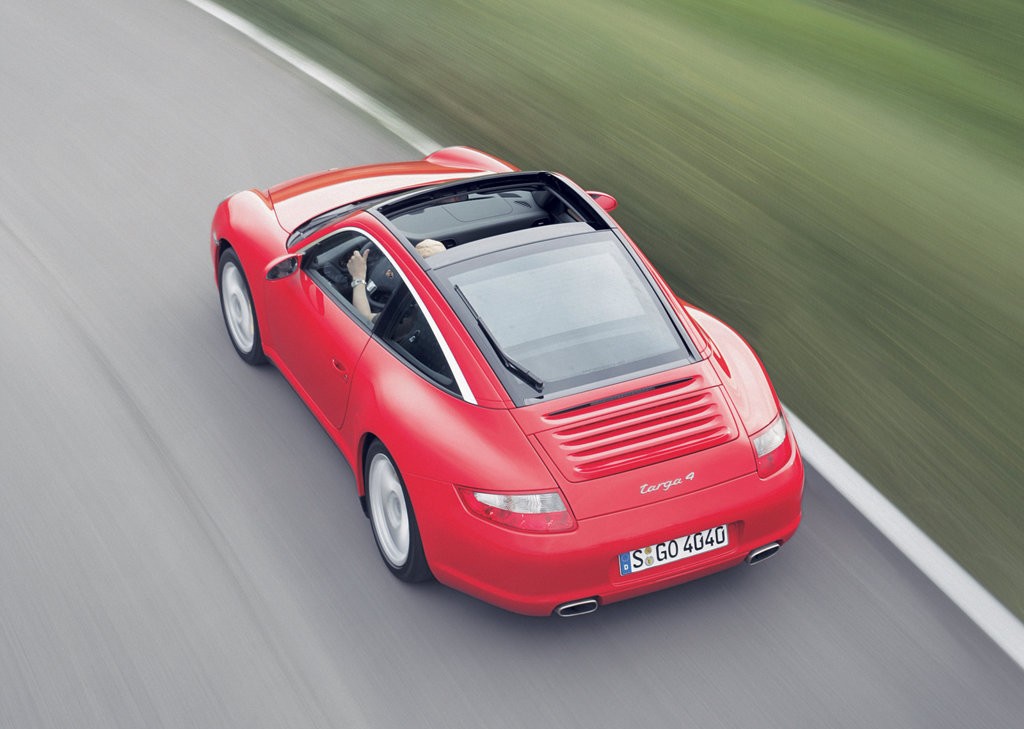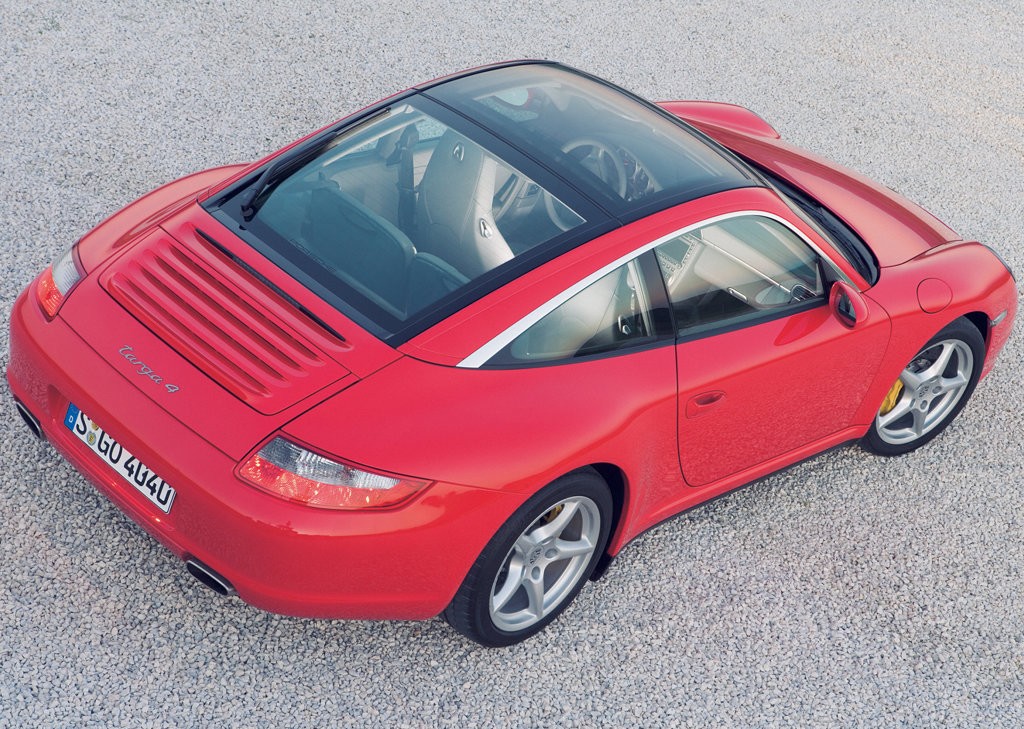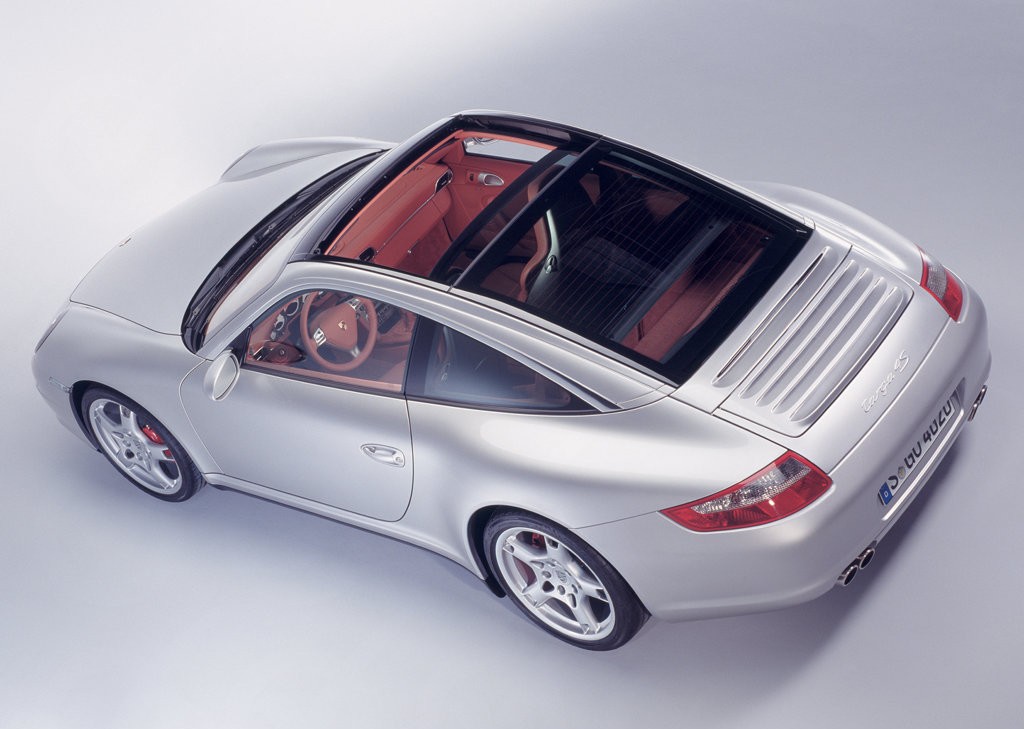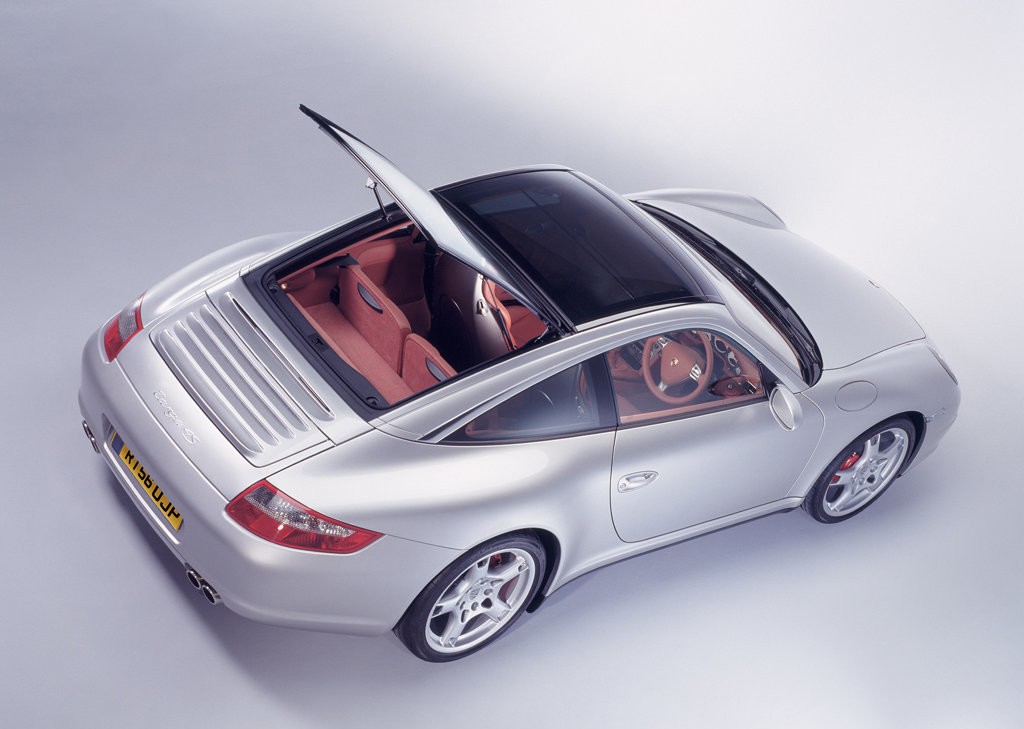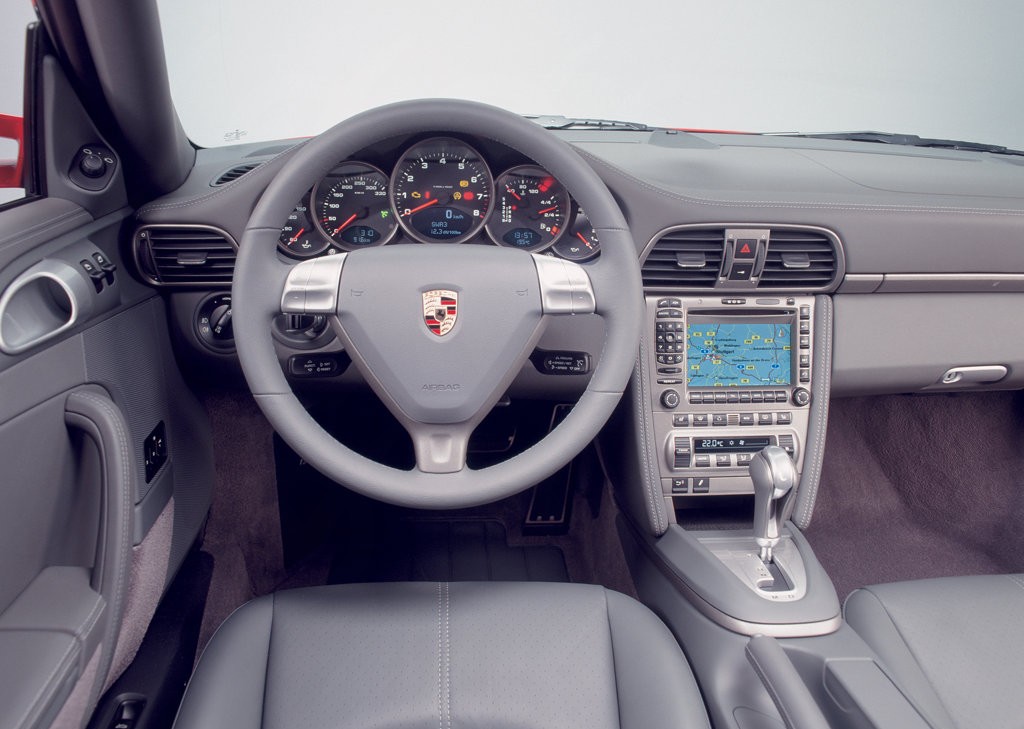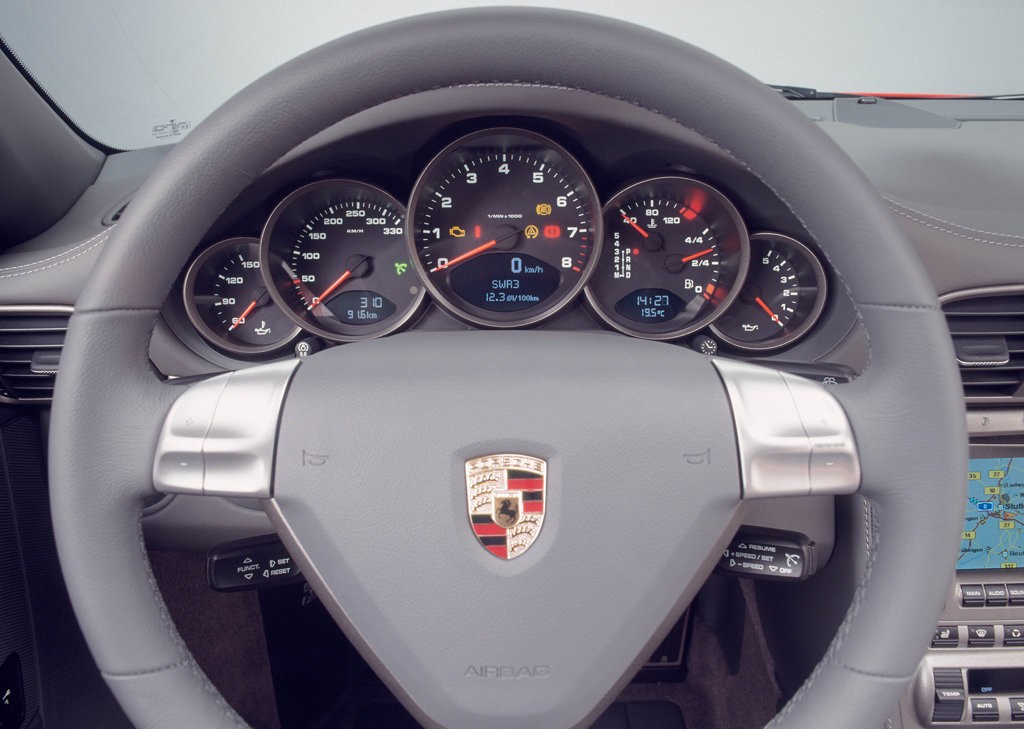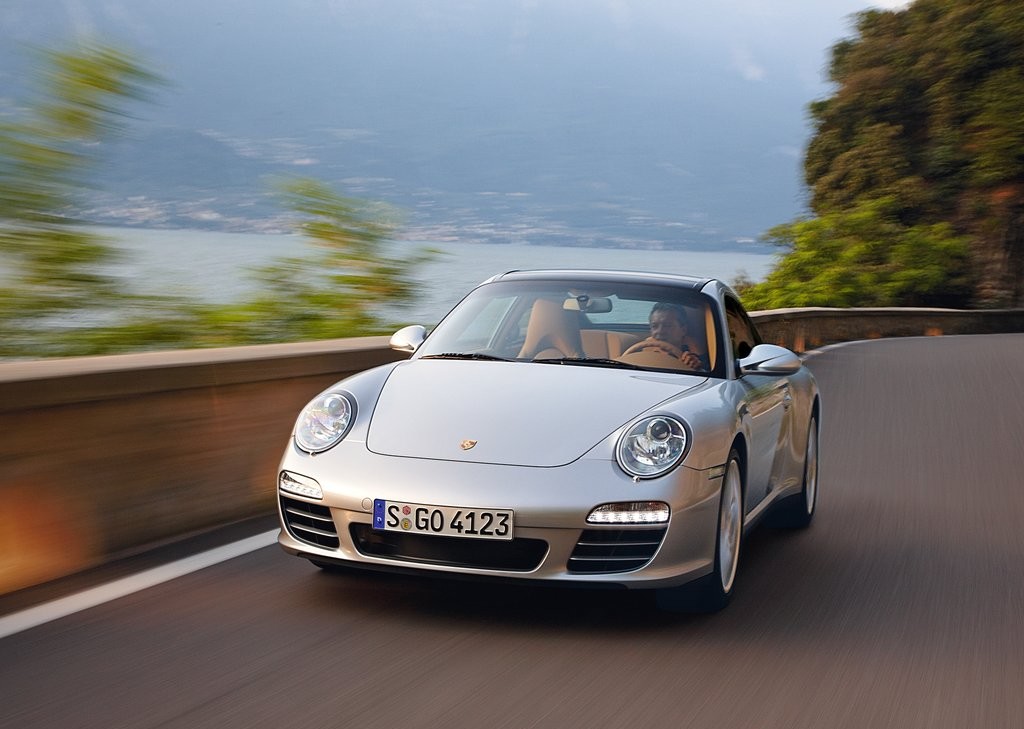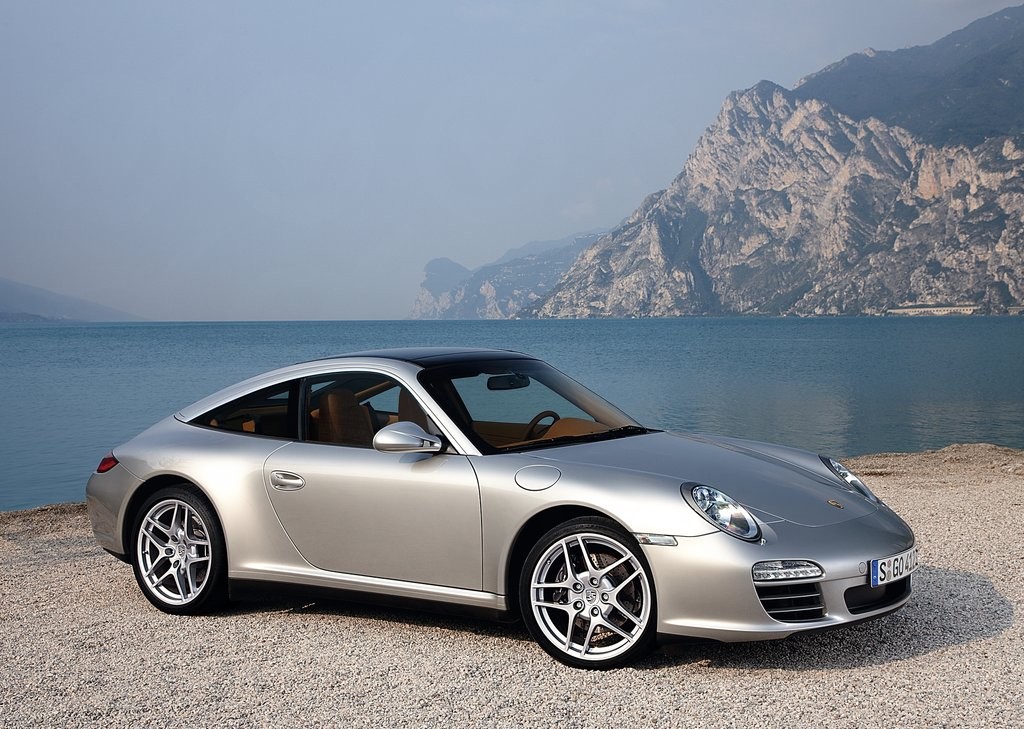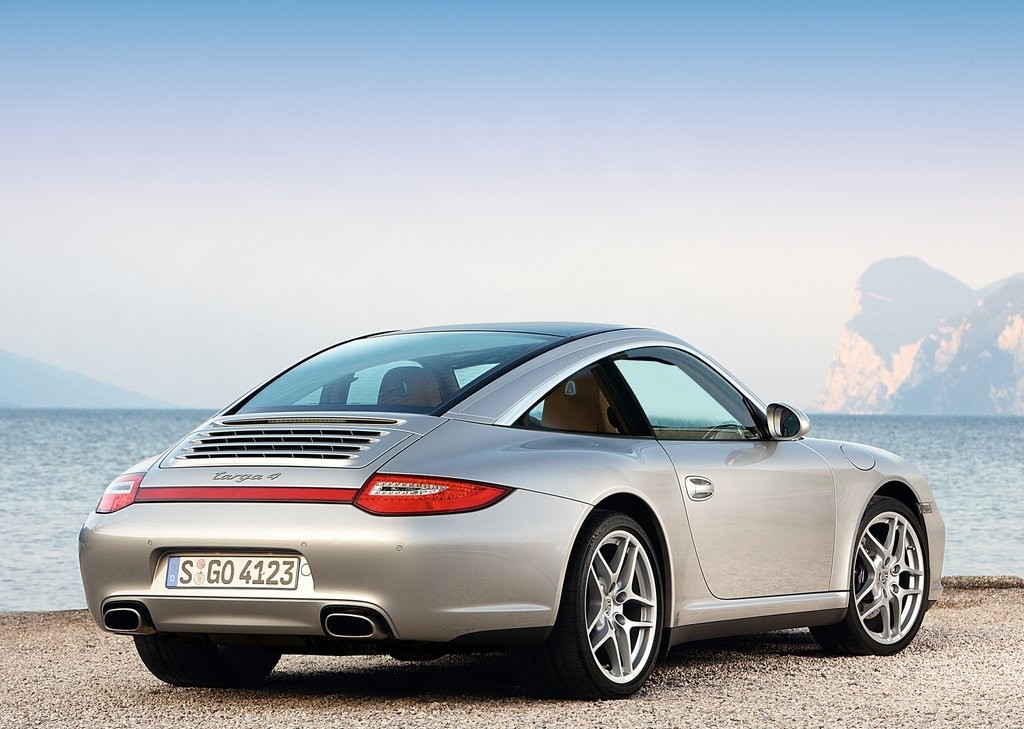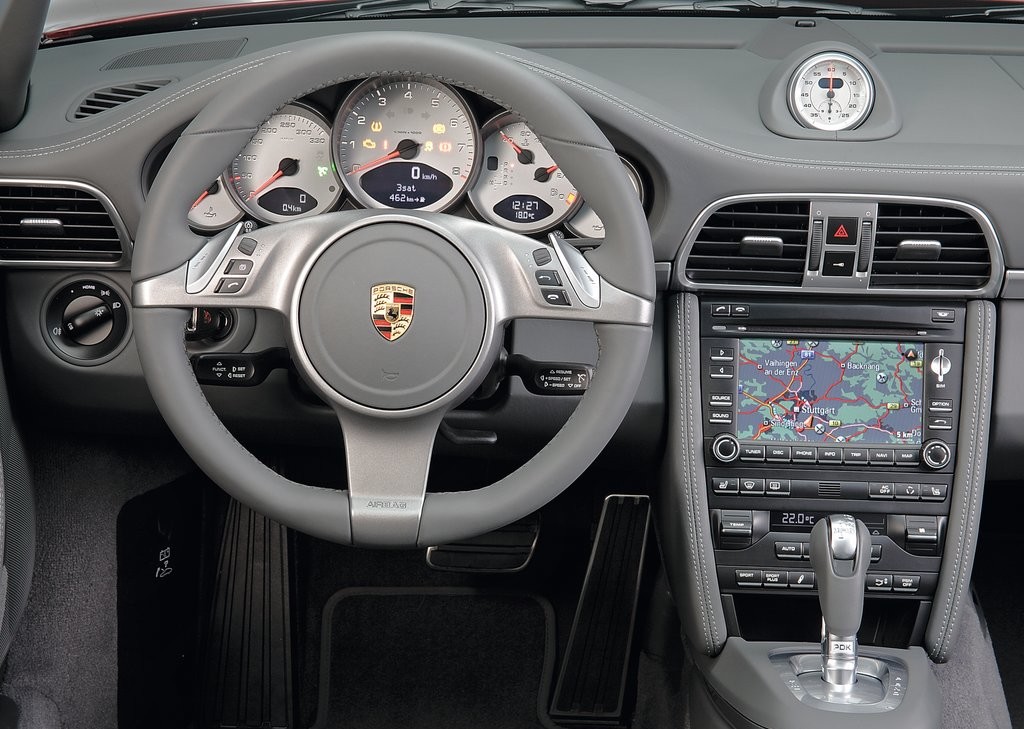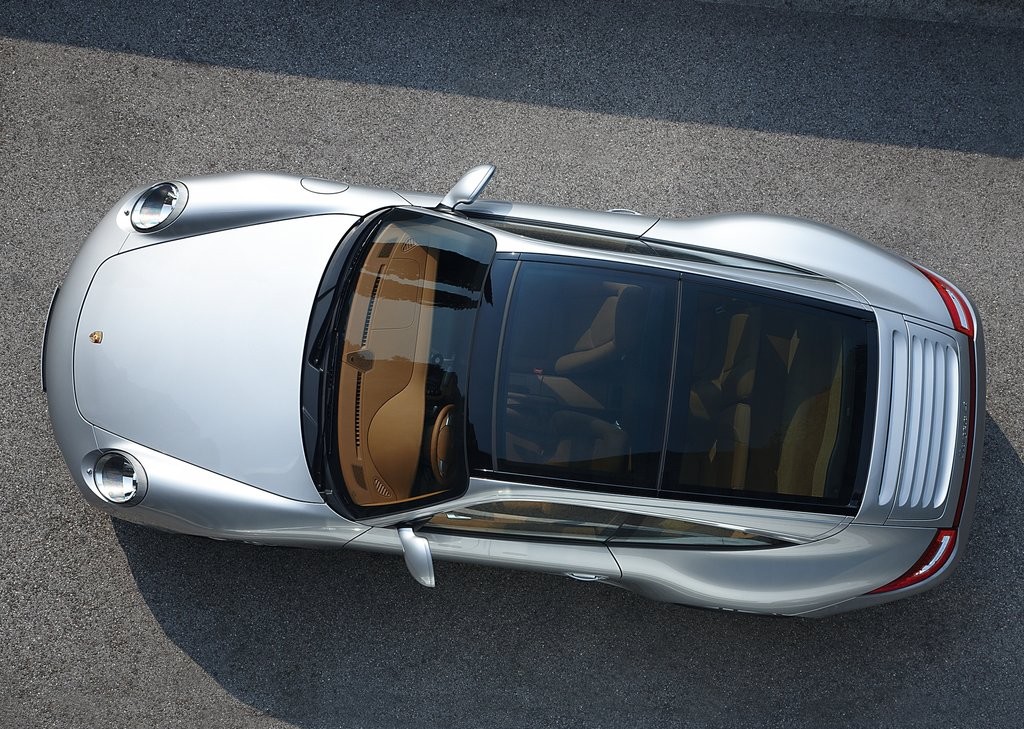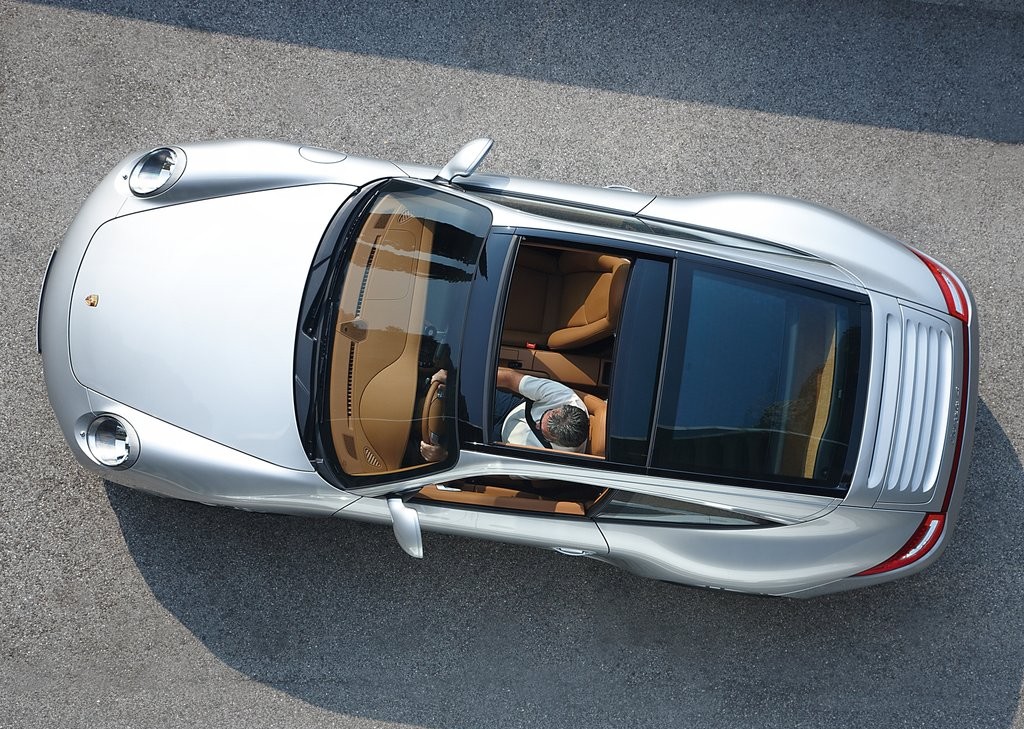
- Free-revving flat six-cylinder engines
- Refined, precise and quick-shifting manual transmission
- Supportive front seats
- Excellent ride/handling balance
- Variable ratio steering is accurate…
- … but lacks weight in initial movement off-centre
- Tiptronic transmission blunts performance
- Impractical rear seats
Review: Porsche 997.I 911 Targa (2006-08)
Overview
Released in November 2006, the Porsche 997 Series I (997.I) 911 Targa was based on the 911 Coupe but fitted with folding tailgate and an upward-lifting rear window which could be retracted by up to half a metre. The Targa 4 was available in a standard and ‘S’ edition, powered by 3.6- and 3.8-litre horizontally opposed (or flat) six cylinder petrol engines, respectively (see table below).
Engines
The 3.6- and 3.8-litre horizontally-opposed, six-cylinder engines featured liquid-cooling, dry-sump lubrication, double overhead camshafts, four valves per cylinder and Porsche’s VarioCam Plus intake valve timing and lift system. While the 3.6-litre engine had a compression ratio of 11.3:1, the 3.8-litre unit had a compression ratio of 11.8:1.
Dimensions and body
Compared to the 996 911 Targa , the 997 911 Targa was 3 mm shorter (at 4427 mm), 87 mm wider (1852 mm), 5 mm taller (1310 mm) and had the same length wheelbase (2350 mm). With torsional stiffness of 15,500 Nm/degree, the 911 Targa body was less than half as stiff as the 997 911 Coupe (33,000 Nm/degree) but more than 50 per cent stiffer than the 997 911 Cabriolet (9800 Nm/degree).
Steering and suspension
The 997 911 Targa had hydraulic power-assisted steering, MacPherson strut front suspension and independent, multi-link rear suspension.
| Engine | Trans. | Peak power | Peak torque | |
|---|---|---|---|---|
| Targa 4 | 3.6-litre M96.05 petrol F6 | 6sp man., 5sp auto |
239 kW at 6800 rpm | 370 Nm at 4250 rpm |
| Targa 4 S | 3.8-litre M97.01 petrol F6 | 6sp man., 5sp auto |
261 kW at 6600 rpm | 400 Nm at 4600 rpm |
AWD system
The Porsche 997 911 Targa 4 was fitted with an all-wheel drive system which utilised a viscous multiple-plate clutch to send power to a central driveshaft which connected to the front differential to deliver between 5 and 40 per cent of the engine’s torque to the front axle.
Safety equipment
Standard safety equipment for the Porsche 997 911 Targa included dual front airbags, front seat-mounted side airbags, front door-mounted head airbags, ABS, electronic stability control, traction control and front seatbelts with pretensioners and load limiters. The Targa 4 was also fitted with two additional braking functions:
- ‘Brake Pre-Filling’, which closed the air gap between the brake pads and discs when sudden accelerator pedal lift-off was detected (improving initial brake performance); and,
- ‘Brake Assistant’, which detected when brake pedal pressure was applied quickly, but not with full force, and increased braking assistance.
Brakes
The 911 Targa 4 had cross-drilled and ventilated 318 mm by 28 mm front brake discs and 299 mm by 24 mm rear discs, both fitted with four-piston black monobloc Brembo calipers. The Targa 4 S, however, had 330 mm by 34 mm front brake discs and 299 mm by 28 mm rear discs, both fitted with larger, reinforced red calipers.
Features: 911 Targa 4
Standard features for the 911 Targa 4 included 18-inch alloy wheels, a thirteen speaker Bose sound system with a six-disc CD player and MP3-compatibility, climate control air conditioning, satellite navigation, leather seats, twelve-way power adjustable front seats, cruise control, front fog lights, a leather-wrapped steering wheel, split and folding rear seats, a leather-wrapped steering wheel, remote central locking, power windows and heated mirrors, a height and reach adjustable steering wheel, driver memory settings (front seat and door mirrors), alcantara roof-lining, a trip computer, motion-sensing alarm and an immobiliser.
Features: 911 Targa 4 S
The 911 Targa 4 S was further equipped with 19-inch alloy wheels with 10 mm lower sports suspension, bi-xenon headlights with washers, metallic interior highlights and Porsche Active Suspension Management (PASM), which provided selectable ‘normal’ and ‘sport’ modes for the adjustable dampers.
Review: Porsche 997.II 911 Targa (2008-12)
Overview
Released in October 2008, the 997 Series II (997.II) 911 Targa introduced direct-injection engines, a seven-speed double-clutch transmission (Porsche’s PDK or Porsche-Doppelkupplungsgetriebe) and cosmetic updates. The direct-injection engines were more powerful, lighter, had greater structural rigidity and 40 per cent fewer moving parts due to new timing chain technology and one-piece cylinder heads. The suspension also featured revised spring, damper and anti-roll bar settings, including an additional stop spring on the front and rear axles.
Visually, the 997.II 911 Targa could be identified by its new front and rear bumpers, larger front air intakes, new front light units above the air intakes, daytime LED running lights, LED brake lights and a full-length rear reflector between the tail-lights. Inside, there was a third-generation Porsche Communications Management (PCM) system, featuring a bigger 6.5-inch touchscreen.
| Engine | Trans. | Peak power | Peak torque | |
|---|---|---|---|---|
| Targa 4 | 3.6-litre MA102 petrol F6 | 6sp man., 7sp DCT |
254 kW at 6500 rpm | 390 Nm at 4400 rpm |
| Targa 4 S | 3.8-litre MA101 petrol F6 | 6sp man., 7sp DCT |
283 kW at 6500 rpm | 420 Nm at 4400 rpm |
AWD system
Unlike its predecessor, the 997.II Targa 4 was fitted with an electronically controlled multi-plate clutch which enabled an infinitely variable front/rear torque split, though two-thirds of the engine’s torque was directed to the rear wheels in normal conditions. The Targa 4 was also fitted with a limited slip rear differential which had a 22 per cent locking action under power and 27 per cent locking action in over-run.
Brakes
The standard braking package for the Targa 4 was upgraded to 330 mm by 34 mm front brake discs and 330 mm by 28 mm rear discs.
Features
Standard features for the 997.II 911 Targa 4 were extended to include auxiliary USB/iPod inputs, bi-xenon headlights with washers, Bluetooth connectivity and rear parking sensors. The Targa 4 S was also fitted with an upgraded PASM system which provided a firmer ride.
Brochure
Related links

